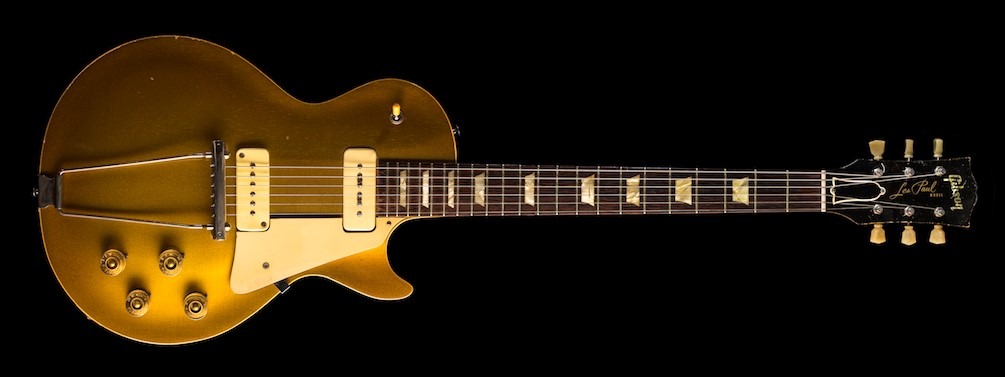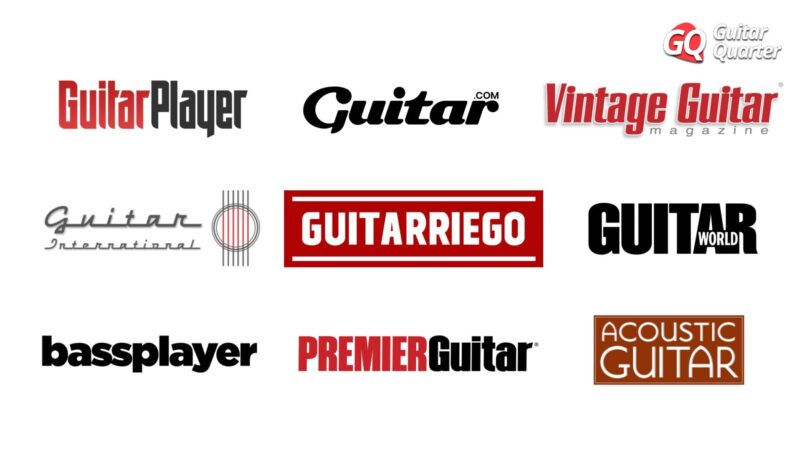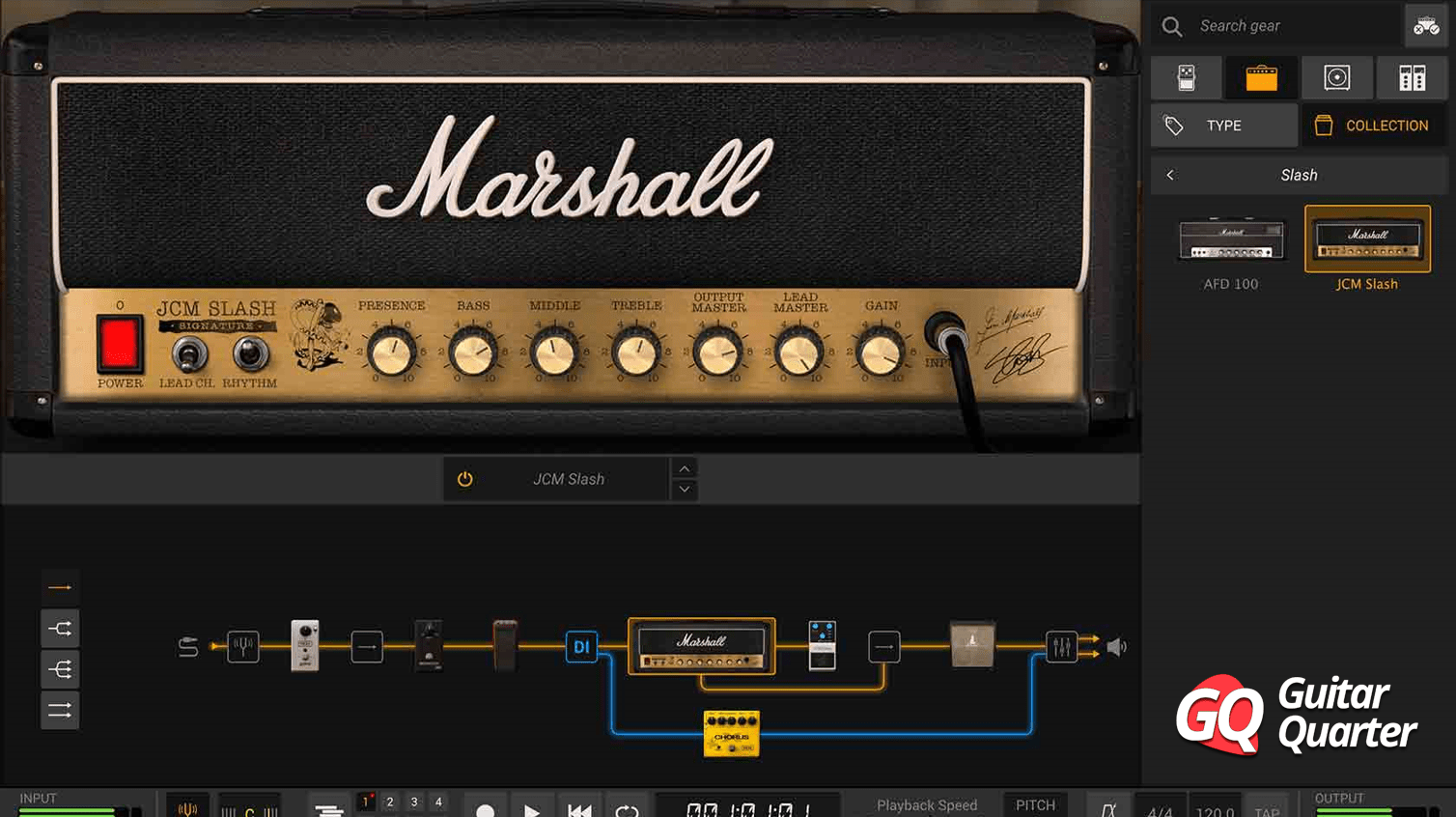Best Years for Gibson Les Paul and Worst Years to Avoid

The best and worst years of Gibson Les Paul, its golden ages to buy and its dark ages to avoid: vintage and modern, qualities, characteristics and differences.
Table of Contents
Gibson Les Paul: qualities and characteristics through the years
The Les Paul is the most iconic guitar from Gibson, the manufacturer of electric guitars with the most history and tradition. The Gibson Les Paul was the first solid body electric guitar made by the brand. Its launch was in 1952, but it had different changes over the years until it reached the definitive specifications in 1957. If you want to know more about the changes, read the evolution of the Gibson Les Paul.
In 1960 the Les Paul was discontinued and replaced by the SG model. Its overly traditional design and its greater weight and cost compared to the rest of the guitars on the market cause its sales to decline. Thus, the Gibson SG, with a modern design, lighter and cheaper, replaces it.
In 1968, with the infamous Norlin Era, thanks to the adoption of famous musicians such as Eric Clapton, Mike Bloomfield and Keith Richards, the Gibson Les Paul was relaunched, and manufacturing continues uninterrupted to this day.
Best Gibson Les Paul years
Here we speak in general terms about best Les Paul years, but it should not be generalized. In all times you can find good guitars and others that are not so. Here we express the quality of materials and manufacturing, and quality controls of each period. Thus, the periods where better instruments are found are identified.
You might also be interested in learning about the rarest and most collectible electric guitars in the world.
Period 1952-1956: The Age of Transition
This time and the next, together cover the years 1952-1960, includes the best Gibson Les Paul for the quality of materials and level of construction. However, since this period is a transitional one to the final model with a Tune-o-Matic bridge and PAF humbucker pickups; this is the second most sought after era of the Les Paul.

Here we can find excellent Goldtop guitars with P90 pickups and long tailpiece and traditional bridge from 1952. Between 1953 and 1954, the Goldtop model guitars began to have a Wrap Around bridge. But between these two years there is another important difference, it was not until 1954 that the neck took the angle of 17º, which will be final. Finally, in 1955, the Gibson Les Paul incorporated the Tune-o-Matic bridge.
This is probably the second most sought-after era for the Gibson Les Paul, especially for collectors. It is even normal to find «Conversion» guitars, which are guitars from this era that are modified to the definitive specifications of the Les Paul. That is, the P90 pickups are changed for PAF humbuckers and the Tune-o-Matic bridge is added -to those before 1955-. This is due to the high quality of construction and wood.
The mahogany used to build the guitars of these years is some of the lightest there is. You might also be interested in knowing more about the weight of the Gibson Les Paul and its weight reliefs.
Period 1957-1960: The Golden Age of Gibson Les Pauls
The best era of the Gibson Les Paul is undoubtedly this. Gibson Les Pauls that were made between 1957 and 1960 are the Holy Grail of the model. In 1957 the model finally appeared as we know it today. Therefore, here are the best times in terms of construction quality and materials used and the most sought-after specifications.
The best years for the Gibson Les Paul are 1958, 1959 and 1960, the “Burst” years. But if we have to choose the definitive best year of the Gibson Les Paul is 1959.

Within this Age, there are also different levels of preferences. In 1957, the Gibson still came in a Goldtop finish. It was in 1958 that the Sunburst finish appeared, in which you can see the plain or figured maple tops. Gibson Les Pauls made between 1958 and 1960 are known as “Burst”; and these are the most appreciated of all. But even among the Bursts there are differences. Flamed tops only appeared with more consistency in 1959 and these generally have better quality than those that followed in 1960. Therefore, the order of value in general goes as follows: first the Les Pauls from 1959, then the ones from 1960, followed by 1958 and finally the ’57 Goldtop. There is another difference between the 1960 Gibson Les Pauls and their predecessors, and that is the «slim-taper neck» profile.
These are definitely the best years of the Gibson Les Paul: 1959, 1960, 1958 and 1957. Unfortunately, the prices of these instruments are very high, and there are very few.
In 1961, the Gibson Les Paul was discontinued and replaced by the SG, due to declining sales.
Also, we recommend you read our tutorial on how to examine vintage guitars with ultraviolet black light.
Period 1968-1971: The Return of the Les Paul
Thanks to the adoption of Gibson’s popular guitarists, seven years later, the company relaunched the Les Paul. The company released a Goldtop P90 model similar to the 56 one. Gibson also launched a two humbuckers Custom model, but instead of having an all mahogany body like the 57 Black Beauty, it also had a maple top like the Standard model.

In 1969, the Gibson Les Paul Deluxe with mini humbuckers appeared. The guitar was the same from 1968, only instead of using P90s, taking advantage of the same cavity, they were loaded of a remaining stock of mini-humbucker pickups from the Epiphone factory.
This era, from 1968 to mid-1971, is probably the third most sought-after era for the Gibson Les Paul.
Period 1971-1985: The Norlin Era
In 1970, an Ecuadorian company took control of Gibson, from this moment the Norlin Era began. The new shareholders implements what they see as “improvements” in processes and production to lower costs and combat Japanese competition. But these changes, implemented from mid-1971 on, are not well received by Les Paul purists. This are Gibson bad years to avoid. This is why this period is considered Gibson’s darkest.

These years guitars are built with pancake bodies, three-piece maple tops instead of bookmatched two-piece ones. Necks are laminated made of three-piece of mahogany or maple. The pancake bodies and the laminated maple necks, sought to improve the quality since they gave more stability to the guitar. But these changes were a big disappointment for Gibson Les Paul users.
Also, in this years there was the belief that the weight helped the tone of the instrument. For which in these years the guitars are the heaviest of all time. Some Gibson Les Paul can weigh up to 12 pounds -5.44 kg-.

Also visit our guides to the best years of the Gibson SG, Fender Stratocaster best years to buy and best Fender Telecaster years.
Period 1986-1999: Return to the roots and improve the quality
Between 1986 and 1999 Gibson focused on improving the quality of its products. In these years, greater quality controls are implemented in all processes. These improvements impact the use of better woods and more careful finishes.
In the late 1980s, Gibson began to define models based on classic specifications. Thus, Gibson began his way to what most of the fans of the brand considered the “correct” way to make traditional Les Paul guitars.
To achieve better quality, the company restructures itself, reducing itself and taking a more manageable size, achieving greater control of what it manufactures.
Thus, from the mid-80’s a rebuilding of the brand begins. Good models can be found, especially from the 90’s. In fact, the period from 1990 to 1996 is considered a modern golden age.

Period 2000-2006: Stability in quality
During this period, there is not too much to highlight. Gibson has already made up much of its lost trajectory in the Norlin era. Gibson Les Paul models are in line with what the market expects and how it should be made. Gibson’s production continues to grow, but there are no significant sourcing or quality issues.
Also, you might be interested in our review on the best online VST guitar amp simulators.
Period 2007-2012: Shortages and fall in quality
From 2007 to 2012 are bad years, Gibson has grown quite a bit and is suffering from rosewood and ebony stockouts. This impacts the quality of the woods used in guitars. The quality of the instruments is varied, since it does not get enough quantity and quality to supply the production.
In this period, chambering is implemented in some Gibson Les Paul models, to be able to use heavier woods without the guitars weighing what a 70’s weighs. For the fan of the brand, this means a reduction in quality and breaks with the tradition of the model. This problem is especially exacerbated in the three years from 2010 to 2012. Gibson is forced to use laminate and alternate woods, more-pieces bodies, and lower-quality, heavier mahogany.

Gibson Les Paul Custom adopts Richlite to replace ebony
In 2010, due to the lack of ebony, the iconic Gibson Les Paul Custom discontinued being made with an ebony fingerboard, and began using Richlite. Richlite is a synthetic material composed of cellulose and phenolic resin. There are special models that come with an ebony fretboard, but the “standard” Custom model does not.
Don’t miss our lesson on the CAGED system for playing chords across the guitar fretboard.
2013-2021 period: Gibson Les Paul today
Starting in 2013, Gibson improves its sourcing problems. It begins to use different qualities of mahogany but with an effective selection process in which the different qualities are assigned according to the model level. Thus, the Gibson Les Paul Standard, once again have a high quality level and even wood.
The year 2013 is considered the best of the current millennium, since the specifications are in line with what is considered “correct” by the Gibson public. In addition, the quality of wood and construction is consistent. However, this changes from the year 2014, when Gibson wants to “update” and “modernize” their guitars. The G-Force robot tuners, the High-Performance neckjoint, logos and inlays different from the traditional ones appear, among other modifications. All these changes are highly resisted by the traditionalism of the brand fanatic.
The 2015 Gibson Les Paul comes with a wider fingerboard. Some models also have an adjustable bronze nut, do not have the traditional nibs and are equipped with G-Force. This makes that year one of the most avoided years by “vintage correct” fundamentalists.

As of 2016, Gibson begins to return to the “tradition”, and improving the specifications towards the classic ones. Emphasizing Historic models for the more expensive lines and standard models are classified by decade. That is, the lines are focused on the tradition and classic times of the Les Paul. The current years are already considered by many to be the best for the higher lines of the Les Paul.
You might be interested in our selection of the best beginner DAWs for your Home Studio.
Summary of the best years of the Gibson Les Paul to buy:
1957-1960: These are the golden years of the Gibson Les Paul. Gibson Les Paul “Burst” from 1959 are considered the best of all time. Then the 1960 Gibson Les Pauls are the second most sought after, followed by the 1958 guitars and finally the Goldtops made in 1957.
1952-1956: This period is the second most appreciated for its excellent quality of wood and construction. Many collectors who don’t get their hands on a 1957-1960 Gibson Les Paul seek out guitars from these years and modify them to the ultimate Les Paul specs. That is they replace the P90 pickups with PAF and add a Tune-o-Matic bridge. These modified guitars are called “Conversion”.
1968-1970: Excellent Gibson Les Paul Customs can be found here, you can also find Deluxe models with excellent quality mini Humbuckers.
1990-1996: This is a modern golden age, Gibson went back to its roots and Les Paul guitars of outstanding quality can be found.
Additionally, the years 2013 and 2016 to present are considered excellent modern years for the Gibson Les Paul.
We recommend that you read the following note about Gibson Les Paul vs Epiphone Les Paul.
Summary of the worst years to avoid a Gibson Les Paul:
1971-1985: These are the worst years of the Gibson Les Paul Standard that we recommend avoiding buying, although you can always try a guitar and be pleasantly surprised.
2007-2012: This period has very variable qualities given the lack of supply of good wood to maintain Gibson’s standards.
2014-2015: While the quality is good, the guitars include innovations that are not well received by Gibson fans. Thus, except for the “vintage correct” reissues, the 2014 and 2015 Gibson Les Pauls are highly underappreciated and we recommend avoiding buying.
You can find below a great demo of Gibson Les Paul guitars from the best years below:
What is your favorite time for value for money? What are the best years of the Les Paul for you? Tell us about your experiences in the Comments section.
Recommended Notes:







I play a 2011 gibson 50s tribute with humbucker pickups I like it the sound is great I must of got lucky ..
Thanks for the website it is truly an informative website, thanks for sharing it.
I bought one of the first historics 1993 #4 r7 prototype, a 2003 r7 brazilian, and an early 2011 goldtop is by far the best player bought used and in perfect unplayed condition. The first 2 are gone. THEY were great guitars but you you cant catagorize any group or year, ther are good and not as good in any year.
I recently aquired a 2011 standard in cherry burst. The body is chambered and it’s got a beautiful mid range thick tone. There’s a beautiful flame to the maple top that you can see through the amber and red of the burst. I think I got one of the good ones from that year
Hi JohnnyP, thank for your comment. Glad to know that you Standard sounds great and doesn’t weigh much! The perfect combo!
Do the bad years (2007-2012) also apply to the customs? Ive got a 2009 custom so happy I got the ebony fretboard but I’m curious if the wood shortages trickled down to the customs shop or were thee good billets reserved for the customs shop and they weren’t effected by the shortages.
Hi John, thanks for your comment.
We talk about general quality and specs, this doesn’t mean that in the bad years all the guitars are bad, and in the best ones all the guitars are great. Also, the article is based in the general preference of the market.
Of course Gibson uses the best wood for the best models.
In the case of the Customs, the wood is not visible, so it doesn’t directly affect its price, what it does matter in the Customs is that it has ebony fretboard (and the tone of course!), so Congrants! They are great axes!!!
2015’s are my fav.!
I love the extra wide fretboard and don’t care either way about the superficial stuff like robotuners or the hologram.
These are fantastic guitars with amazing tops and finishes….
and I love that nobody wants them!
2015 Traditional tobacco burst
2015 Less Plus cherry burst
Light mahogany is not necessarily acoustically good mahogany. The 50’s mahogany was from an old tree and was heavy. These days, mahogany is a wood that has been grown and cut for about 12 years. Light wood produces a lighter sound. Sounds like the theme song of a Japanese animation. This sound doesn’t fit the blues. A one-piece body is not a good body either. 2 piece is the best and 3 piece is not bad either. Since One Piece is a tree itself, transformation occurs more easily. Instruments should be evaluated for their sound, not for their weight or number of pieces.
Hi AJ, thanks for your feedback!